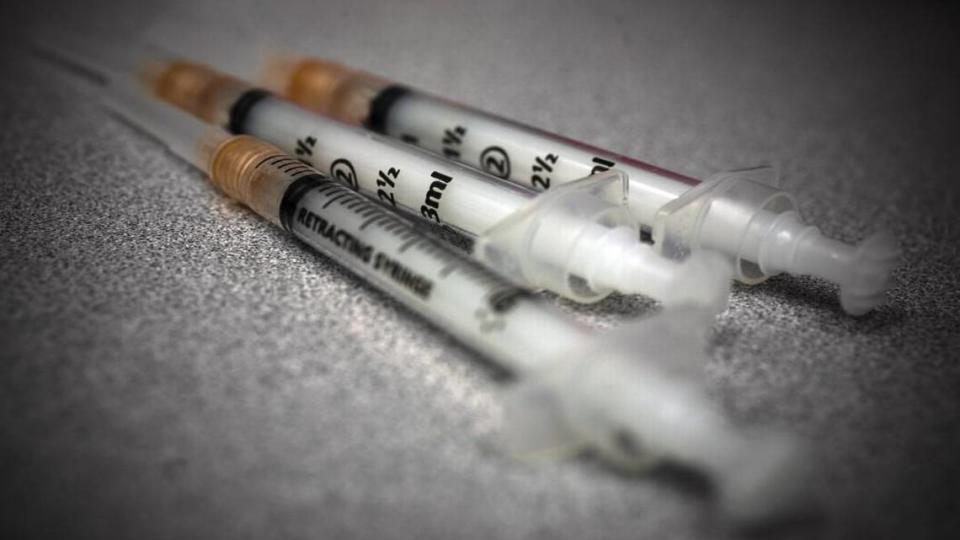Opioid settlement money coming to NC. How faith leaders want to see it spent.
North Carolina faith leaders started hearing from their parishioners several years ago that the opioid crisis was hitting home.
They didn’t always know how to help.
For many families and individuals, clergy can be a first contact during a crisis, said Elizabeth Brewington, an associate director of the NC Council of Churches.
But in the mid 2010s, with opioid overdoses claiming more lives statewide than car crashes, the council needed strategies to support those facing addiction.
“Faith communities were losing people, congregants, community members, and they didn’t know what to do,” said Brewington, who works in the council’s Partners in Health and Wholeness Program focusing on drug policy and other issues.
North Carolina counties have begun receiving their combined $750 million share of a $26 billion settlement between local governments across the country and the nation’s four largest opioid distributors and manufacturers. Negotiations, partly led by N.C. Attorney General Josh Stein, sought to hold the corporations accountable for the opioid crisis, The News & Observer reported in February.
In a June 6 letter, 54 council members called on county and state leaders to give three harm-reduction strategies priority for settlement funding.
Harm-reduction strategies
Harm reduction strategies, like needle exchanges, reduce stigma and create safer environments for drug users to help prevent overdoses and disease transmission.
Groups receiving settlement money can fund projects from a short list of evidence-based strategies or choose from a longer list following a study and review process.
The 54 faith leaders have backed a three-pronged approach:
▪ Support existing safe syringe sites, which collect used syringes and distribute clean ones alongside the overdose reversal drug Naloxone (Narcan).
▪ Expand distribution of overdose-reversal drugs including Naloxone into jails and community programs.
▪ Include opioid users and their loved ones in funding discussions.
“People who use drugs and people with lived experience are going to be the ones with the solutions,” Brewington told The News & Observer. “They’re closest to the problem; they’re going to be closest to the solution.”
When the Council of Churches heard most of the settlement money would be distributed at the county level, it surveyed members on what their communities needed most.
Until then, it had tackled opioid issues on an individual level. Advocacy on a larger scale, Brewington said, felt affirming.
“We value every person that wants to get help for their ailments,” said Tom Harris, a trustee of council member Pilgrim United Church of Christ in Durham County. “This is beyond their will power to get out.”
Harris says since signing the letter, his empathy for those who are addicted has deepened.
In one conversation with a parishioner working in medical insurance, Harris learned some insurance companies are considering making Naloxone cheaper, to help those buying it for friends and family.
From January to May, nearly 40% of patients admitted to North Carolina hospitals for opioid overdoses lacked health insurance.
“I learned from him that Naloxone is a life-saving drug,” he said, “and there’s still many people who don’t have access to it.”
The council’s conversations revealed how many members lacked access to safe syringes and overdose reversal drugs, said Brewington.
“There is a raised awareness to faith communities of what is available,” she continued. “Having faith communities think critically and creatively about what would best serve their community has been really a wonderful response.”

Community support growing
Community support for harm reduction programs is growing, along with government support strengthened by the settlement, said Charlton Roberson, a regional coordinator for the N.C. Harm Reduction Coalition.
“[Churches] are starting to see the benefits of harm reduction to the community at large,” Roberson says.
In 2020, more than nine North Carolina residents died from an opioid overdose every day, according to the N.C. Department of Health and Human Services. More than 28,000 opioid-related deaths have been reported in the state in the last 20 years.
For many, viewing harm reduction as healing rather than enabling is a major change, Roberson said.
“We’re actually out here saving lives,” Roberson said. “There’s a benefit to the greater community as far as mitigation — to cut down on property crimes and other things, communicable diseases, emergency room visits. … I think they’re finally getting it.”
Roberson recalled speaking with one resident who found a community member unresponsive in the parking lot after a church conversation about harm reduction. The woman recognized the signs of an overdose and was able to administer the Narcan she’d just started carrying.
“She really took that back to her church and touted how important it is for everybody to have Narcan in the trunk of their car,” Roberson said.
An epidemic continues
As the settlement money is disbursed, opioid-related deaths in North Carolina continue to rise.
The state saw an 8% increase in suspected overdoses in the first five months of this year. Opioid-related overdose visits to the emergency room rose in the same time frame.
To Roberson, the most effective use of settlement money would be to create sites where users could tap multiple harm reduction programs at once.
“There’s already a plethora of recovery-related services out there,” Roberson said. “There’s prevention out there. But everything is so dispersed; there’s no cohesion with service delivery. So all the services that a person may need are not readily available.”
What’s next
So far, Roberson and Brewington say lawmakers have been receptive to their feedback. The council recently released a second letter calling for the same funding priorities from the state government, which will receive a 15% share of North Carolina’s settlement dollars.
Gov. Roy Cooper released his recommended budget earlier this month which would allocate nearly $15.6 million to addressing the opioid crisis, along with funding from the Department of Health and Human Services funding and the Department of Justice.
The House of Representatives released its state budget proposal Tuesday.

 Yahoo Movies
Yahoo Movies 
